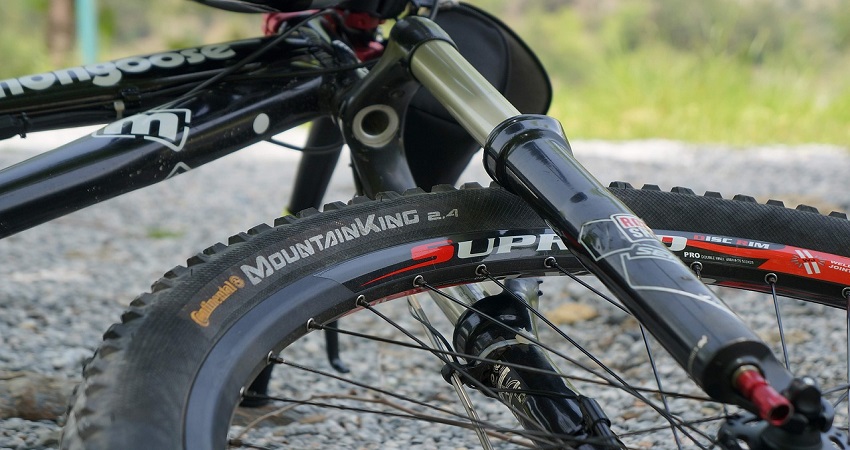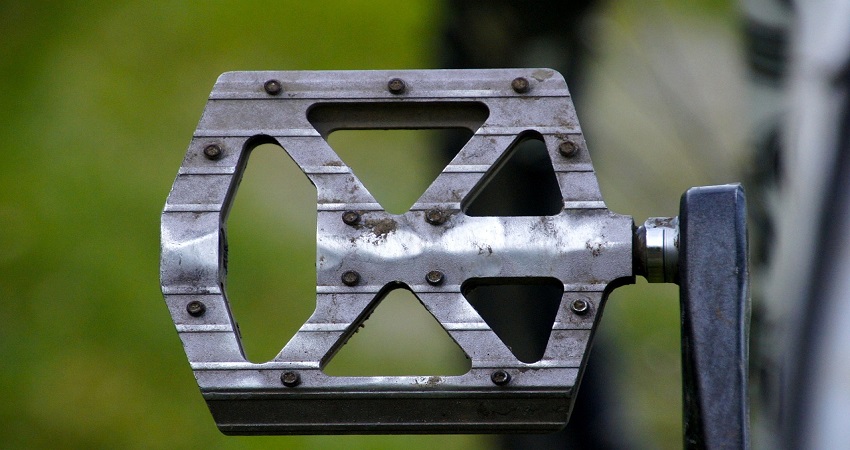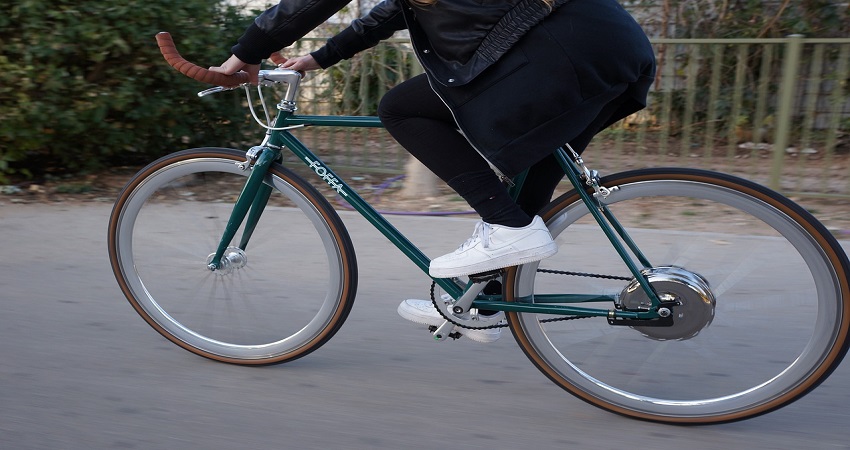
Are All Bike Forks Universal?

Not all bike forks are universal; they vary in size, compatibility, and design. Bike forks come in different sizes and axle configurations, which makes them specific to certain frames and wheel styles.
Additionally, compatibility can also vary based on the type of riding and the suspension system required. Therefore, it’s important to ensure compatibility and seek professional advice when choosing a bike fork. Bike forks play a crucial role in a bicycle’s performance and comfort.
They are responsible for absorbing shocks, providing stability, and allowing for steering control. However, given the diverse range of bikes available, one may wonder if all bike forks are universal. This article will explore the concept of universal bike forks and shed light on their compatibility and design variations. Understanding the importance of finding the right bike fork is essential for ensuring optimal ride quality and safety. So, let’s dive in and address the question: Are all bike forks universal?
Different Types Of Bike Forks
Bike forks come in different types, but they are not universal. Each fork has its own compatibility with specific bikes, such as road bikes, mountain bikes, or hybrid bikes. It is important to choose the right fork that fits your bike’s specifications for optimal performance.
Bike forks play a crucial role in the overall performance and comfort of your ride. There are two main types of bike forks: rigid forks and suspension forks. Let’s dive into each type to understand their specific features and benefits.
Rigid Forks
Rigid forks, as the name suggests, do not have any suspension mechanisms. They are made of a single piece of sturdy material like steel, aluminum, or carbon fiber. Rigid forks offer simplicity, durability, and reliability, making them popular among road cyclists, commuters, and riders who prefer smoother terrain.
These forks excel in transferring power efficiently from your pedaling to the wheels, resulting in a more responsive and agile ride. Rigid forks also provide better control and precision during technical maneuvers, making them a preferred choice for riders who prioritize speed and maneuverability over comfort.
Although rigid forks are not designed to absorb shocks, they do help in minimizing vibrations and road buzz, leading to a relatively smooth ride. These forks are also lightweight compared to suspension forks, contributing to better overall bike weight and easier handling.
Suspension Forks
Suspension forks, on the other hand, are equipped with a dampening system that absorbs shocks and impacts from the terrain you’re riding on. They are commonly found on mountain bikes, gravel bikes, and other off-road-oriented bicycles.
Suspension forks consist of several components, including a suspension fork crown, suspension legs, and a shock-absorbing system. The shock-absorbing system can either be in the form of coil springs or air springs, with each offering its own set of advantages.
These forks are designed to improve your comfort and control while tackling rough terrains, such as rocky trails, jumps, and uneven surfaces. The suspension system minimizes the impact on your body, enhancing overall ride quality and reducing fatigue.
Depending on the type of suspension fork, you can adjust the level of compression, rebound, and travel, allowing you to fine-tune the fork to your preferences and riding conditions. This adjustability makes suspension forks versatile and adaptable to various terrains and riding styles.
It’s worth noting that suspension forks add weight to your bike, which might affect climbing performance and overall handling on smoother surfaces. However, for riders who frequently encounter rough terrains or crave a more forgiving ride, suspension forks are an invaluable asset.
In conclusion, bike forks come in different types, each catering to specific riding preferences and terrain demands. Whether you opt for a rigid or suspension fork depends on your riding style, comfort requirements, and the type of terrain you frequently encounter. Understanding the characteristics and benefits of each fork type will help you make an informed decision that enhances your overall riding experience.
Compatibility Of Bike Forks
Bike forks compatibility varies, as not all forks are universal. It is important to consider factors like fork diameter and axle type to ensure a proper fit for your bike.
When it comes to bike forks, compatibility is key. Whether you’re upgrading your current bike or building a new one from scratch, understanding the compatibility of bike forks is crucial to ensure a proper fit. In this article, we’ll dive deeper into three important factors to consider: fork diameter, axle standards, and steerer tube length.
Fork Diameter
The fork diameter refers to the width of the part that connects your bike’s front wheel to the frame. It is important to ensure that the fork diameter matches your bike’s frame and front wheel. Most bike forks come in two standard diameters: 1 inch (25.4mm) and 1-1/8 inch (28.6mm). However, with the rise of mountain biking, larger diameters such as 1.5 inches (38.1mm) are becoming more popular. Check your bike’s specifications or consult a professional to determine the correct fork diameter.
Axle Standards
Axle standards determine how the front wheel is attached to the bike fork. The two most common axle standards are QR (quick release) and thru-axle. QR axles use a thin skewer to secure the wheel to the fork, while thru-axle systems use a larger diameter axle that is threaded directly into the fork. Thru-axles provide increased stiffness and security, especially for off-road riding. Make sure your bike fork and front wheel have compatible axle standards to ensure a safe and secure fit.
Steerer Tube Length
The steerer tube length is the part of the bike fork that extends above the headset and connects to the handlebars. It is essential to select a bike fork with a steerer tube length that matches your bike’s frame and desired handlebar height. If the steerer tube is too short, you may not be able to achieve the desired riding position. On the other hand, if it is too long, you may need to trim or add spacers to achieve the correct handlebar height. Measure your bike’s current fork or consult a professional to determine the appropriate steerer tube length for your needs.
In conclusion, when it comes to bike forks, compatibility should be your top priority. Ensure that the fork diameter, axle standards, and steerer tube length align with your bike’s specifications for a proper fit. By understanding these key factors, you can confidently choose the right bike fork for your needs.
Factors To Consider When Choosing A Bike Fork
When it comes to choosing a bike fork, there are several factors that you should take into consideration. Each of these factors plays a crucial role in determining the perfect fork for your bike. In this article, we will discuss the three main factors that you should think about: the type of riding you’ll be doing, the wheel size of your bike, and your budget.
Type Of Riding
The type of riding you plan on doing is an important factor to consider when choosing a bike fork. Different types of riding require different types of forks to optimize your performance. Whether you’re into mountain biking, road cycling, or commuting, there is a fork designed to meet your specific needs.
For mountain biking, you’ll want a suspension fork that can handle rough terrains and absorb shocks effectively. This type of fork will enhance your bike’s control and provide a smooth ride. On the other hand, road bikes generally require a fork with a rigid design to maximize speed and stability on paved surfaces. Commuters may benefit from a fork that features mounts for fenders and racks to carry their belongings.
Wheel Size
The wheel size of your bike is another critical factor to consider when selecting a fork. Different wheel sizes require forks with corresponding compatibility. The most common wheel sizes are 26”, 27.5” (also known as 650b), and 29”. Each wheel size functions best with a specific fork design that complements its characteristics.
If your bike has larger 29” wheels, you will need a fork specifically designed for that size to maintain proper handling and balance. Similarly, if you have smaller 26” wheels, using a fork intended for larger wheels may negatively impact your bike’s performance. Choosing the correct fork size for your wheel size is essential to achieve optimal performance.
Budget
Your budget is an important factor to consider when shopping for a bike fork. Forks range in price based on the type of riding they are designed for and the materials used in their construction. Carbon forks, for example, tend to be more expensive than aluminum forks due to their lightweight and durable properties.
While it can be tempting to splurge on the latest high-end fork, it is essential to consider your budget and find the best fork that fits within your financial constraints. Remember, there are fork options available for every budget, so you don’t have to compromise on quality or performance.
Upgrading Bike Forks
Upgrading bike forks is an excellent way to enhance your cycling experience. Whether you ride for leisure, fitness, or competition, a better fork can significantly improve your ride quality and overall performance. Before diving into the world of bike fork upgrades, it is important to understand the potential benefits and key considerations involved in this process.
Potential Benefits
Upgrading your bike fork can provide a range of benefits that make it a worthwhile investment. Here are some potential advantages to consider:
- Improved Suspension: A new fork with advanced suspension technology can better absorb shocks and vibrations, offering a smoother and more comfortable ride.
- Enhanced Control and Handling: Upgrading to a high-quality fork can result in better control and handling, allowing you to navigate through challenging terrains with ease.
- Increased Stiffness: Stiffer forks can improve power transfer, making your pedal strokes more efficient and enhancing your overall speed and performance.
- Weight Reduction: Some upgraded forks are constructed with lighter materials, contributing to a lighter overall bike weight. This reduction can make uphill climbs and accelerations less strenuous.
- Compatibility: In certain cases, upgrading your fork may open up compatibility with newer features or components, enabling you to take advantage of the latest advancements in cycling technology.
Considerations
While upgrading your bike fork may offer numerous benefits, several factors must be taken into consideration:
- Bike Frame Compatibility: Ensure that the new fork you are considering is compatible with your bike frame’s specifications, including axle length, steerer tube diameter, and brake mount type.
- Budget: Set a realistic budget for your fork upgrade. There is a wide range of options available, from budget-friendly options to high-end forks with advanced features.
- Riding Style: Consider your riding style and the type of terrain you typically ride on. Different fork options are available for road cycling, mountain biking, gravel riding, and more.
- Research: Conduct thorough research on different brands, models, and customer reviews. This will help you choose a fork that meets your specific requirements and offers good performance and reliability.
- Installation: If you are not confident in your mechanical skills, it is recommended to have a professional bike mechanic install your new fork to ensure proper installation and safety.
By carefully considering the potential benefits and important considerations before upgrading your bike fork, you can make an informed decision that enhances your cycling experience and meets your unique needs. Now that you are equipped with the necessary knowledge, it’s time to explore the world of bike fork upgrades and take your cycling to the next level.
Frequently Asked Questions For Are All Bike Forks Universal?
Are Bike Forks Universal?
No, bike forks are not universal. Different types of bikes require different types of forks with specific dimensions and features to ensure proper fit and performance.
What Are The Different Types Of Bike Forks?
There are several types of bike forks, including rigid forks, suspension forks, and carbon forks. Each type offers different levels of comfort, control, and performance, catering to different riding styles and terrains.
Can I Replace My Bike Fork With Any Other Fork?
No, you cannot replace your bike fork with just any other fork. It is crucial to choose a fork that is compatible with your bike’s frame, wheel size, brake system, and other specifications to ensure safe and optimal performance. Always consult a professional or refer to your bike manufacturer’s recommendations before making any changes.
What Factors Should I Consider When Choosing A Bike Fork?
When choosing a bike fork, consider factors such as the intended use of your bike, your riding style, terrain conditions, suspension travel, and budget. These considerations will help you select the right fork that perfectly matches your needs and enhances your cycling experience.
Conclusion
To conclude, bike forks are not universal, and it’s essential to understand the differences before making a purchase. Whether you need a suspension fork for off-road adventures or a rigid fork for smooth city rides, knowing the compatibility and specifications is crucial.
By considering factors such as wheel size, axle standards, and bike type, you can find the right fork that suits your riding style and enhances your overall biking experience. Stay informed and make an informed decision to ensure a smooth and enjoyable ride every time.



